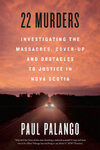"Park Bagger: Adventures in the Canadian National Parks" (Marlis Butcher, 2021)
Marlis Butcher is the first visitor to explore all 47 of Canada's National Parks. This book is an account of her adventures.
Many of Canada's National Parks are easily reachable. (Around half are no more than a few hours away from major Canadian cities by car, and many of them have a well-developed infrastructure for tourists). Others, particularly those in the Arctic, are virtually inaccessible. Many of the northernmost parks can only be reached by boat or plane, and have no facilities whatsoever. (I don't know if this statistic is still accurate, but I had read many years ago that more people have climbed Mount Everest than have set foot in Ellesmere Island's Quttinirpaaq National Park).
Each chapter discusses a different park. This isn't a travel guide; it's her reflections on each of her visits. The chapters range in length from 3 to 20 pages. Not every tale is riveting (there isn't much that can be said about a day hike in an urban park). My favourite chapters were the ones about the vast, barren Arctic landscapes. I'm not sure how many Canadians have ever set foot in any of the three territories (my guess would be less than 1%), but Butcher provides interesting stories about the wildlife, the Indigenous people, and the overwhelming vastness of the untouched land. Butcher is a good writer and tries to be descriptive about what makes the terrain (and wildlife) unique in each park. There were several dozen colour photographs, which was a good inclusion.
Butcher is adventurous, but not a professional explorer. She juggled her quest to visit every park with her marriage, and a successful career. Although she hikes, cycles and canoes, she's not an athlete. She tries to have a positive attitude, but she also talks frankly about the challenges faced (including the logistical hurdles of getting to the remote Arctic parks, hiking over a mountain pass during a severe storm, facing bitterly cold temperatures, and routinely being swarmed by mosquitos). Butcher shows that visiting every National Park is achievable for a "normal" person, as long as they're willing to endure some hardships along the way. (The two biggest challenges for a reasonably fit person, I think, would be the cost of transportation for numerous trips to the Arctic, and foregoing travel elsewhere in the world).
The chapters are organized geographically. I think the book would have flowed better if they had been arranged chronologically. It felt strange for her to talk about completing her quest two-thirds of the way through the book, and then, later on, talk about her first memories of visiting certain parks as a child. Had the book been organized chronologically, it would have given the reader a better sense of how her sense of adventure developed over time, and perhaps a clearer picture as to how and when she decided to make this her life's goal. (Also, I didn't see any compelling reason for Butcher to talk about all of the parks within a given area sequentially. In fact, spreading out similar parks would have made the book flow better, as it felt repetitious reading several consecutive chapters about similar geographies).
This was an enjoyable read. Not every chapter is gripping, and the order is puzzling, but there are lots of good stories in here. Butcher succeeds in showcasing Canada's geographic diversity. It's hard to imagine someone reading this book and not wanting to, at least to some extent, explore the National Parks.











